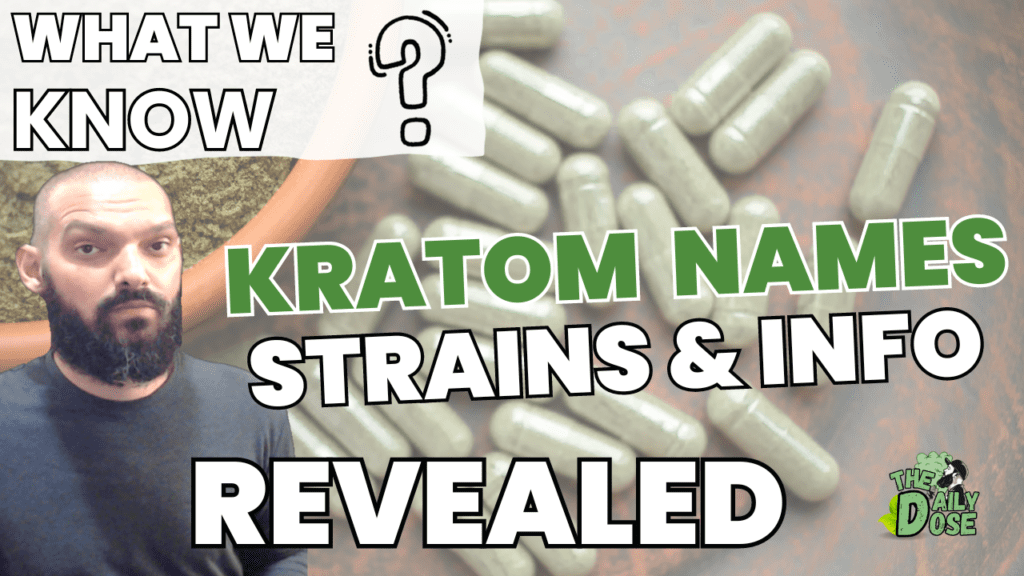Listen to the full episode here: The Daily Dose Podcast
Kratom Strains And Names Explained
In this episode I discuss the different names and strains associated with kratom, for years I have personally questioned the legitimacy of the names and today I have learned a little more about the science that suggest my suspicions were warranted.
Introduction
The world of Kratom, an ancient botanical treasure with a modern following, has been shrouded in mystery, especially when it comes to the names and strains associated with this versatile herb.
For years, enthusiasts and researchers alike have questioned the legitimacy of these labels. Today, we embark on a journey to unveil the truth behind the names of Kratom, exploring the science, culture, and controversies surrounding them.
Understanding Kratom
What is Kratom?
Kratom, scientifically known as Mitragyna speciosa, is a tropical evergreen tree native to Southeast Asia. Its leaves have been used for centuries by indigenous populations for various purposes, from traditional medicine to cultural rituals.
Historical Significance
Delve into the historical roots of Kratom and its cultural significance, spanning generations and continents.
Traditionally, kratom was mostly used as a stimulant by Thai and Malaysian laborers and farmers to overcome the burdens of hard work. They chewed the leaves to make them work harder and provide energy and relief from muscle strains.
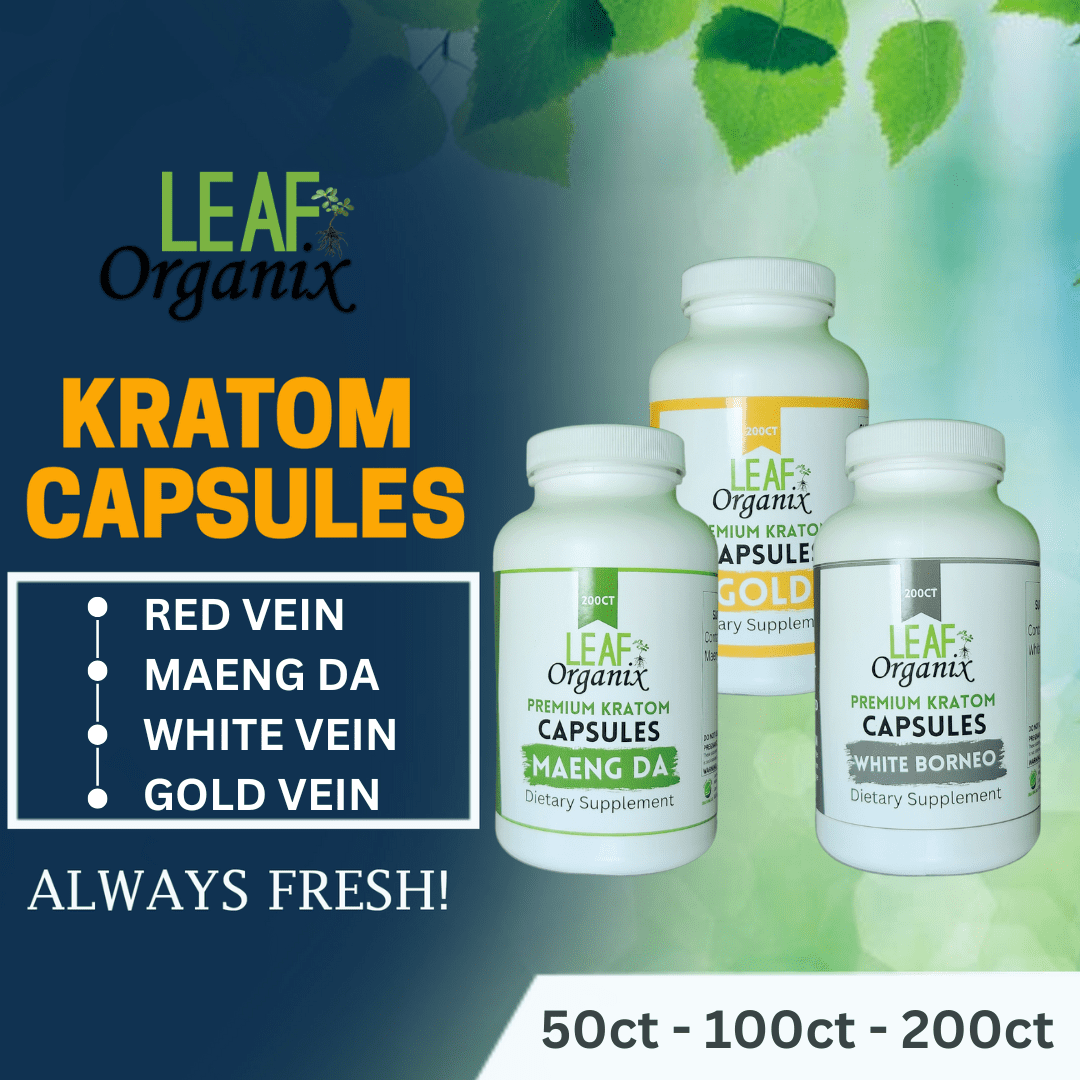
Kratom Naming Conundrum
The Proliferation of Kratom
Discover the vast array of Kratom strains available in today’s market and how they have multiplied over the years.
| Red Veins | Green Veins | White Veins | Maeng Da | Gold |
|---|---|---|---|---|
| Red Vein | Green Vein | White Vein | Maeng DA | Gold |
| Red Maeng DA | Green Maeng DA | White Maeng DA | Maeng DA Red | Gold Red |
| Red Green | Green White | White Green | Maeng DA Green | Gold Green |
| Red White | Green Red | White Red | Maeng DA White | Gold White |
| Red Gold | Green Gold | White Gold | Maeng DA Gold | Gold Maeng DA |
Suspicions About Naming Legitimacy
Uncover the doubts that have surrounded the authenticity of Kratom names and the factors contributing to these concerns.
The Science Behind Kratom Names
Botanical Classification
Explore the scientific taxonomy of Kratom and how it relates to the naming conventions in the Kratom industry.
Mitragyna speciosa Korth. (of the Rubiaceae family) is a 4 to 16 metre high tropical tree indigenous to South East Asia, the Philippines and New Guinea but now cultivated elsewhere. In Thailand, the tree and leaf-preparations from it are called kratom.
Over the years kratom has grown in popularity and with that came an abundance of blends. All of which are simply kratom but for marketing purposes and the illusion of choice many names have been attached by all brands of kratom suppliers.
Alkaloid Profiles
Dive deep into the chemical composition of Kratom and how it influences strain names and effects.
| Mitragynine | 7-Hydroxymitragynine | Speciociliatine | Corynantheidine | Paynantheine |
|---|---|---|---|---|
| Acts on the mu-opioid receptors | Plays a key role in the plant’s pain-relieving effects | Believed to act as a smooth muscle relaxant | Kratom’s stimulant effects | Believed to contribute to the overall effects of kratom when all 5 alkaloids are present in kratom |
- Mitragynine: Mitragynine is the most abundant and well-studied alkaloid in kratom. It is primarily responsible for kratom’s opioid-like effects, including pain relief, sedation, and euphoria. Mitragynine acts on the mu-opioid receptors in the brain, which are the same receptors targeted by opioids like morphine.
- 7-Hydroxymitragynine: This alkaloid is derived from mitragynine and is found in lower concentrations in kratom. It is considered one of the most potent alkaloids in kratom and plays a key role in the plant’s pain-relieving effects. 7-Hydroxymitragynine also interacts with opioid receptors in the brain, though it is more potent than mitragynine.
- Speciociliatine: Speciociliatine is found in smaller quantities compared to mitragynine and 7-hydroxymitragynine. While it is not as potent, it may contribute to some of the effects of kratom. Speciociliatine is believed to act as a smooth muscle relaxant.
- Corynantheidine: This alkaloid is present in kratom but in even smaller quantities. It is thought to be a non-competitive antagonist at the alpha-2 adrenergic receptors, which may contribute to kratom’s stimulant effects.
- Paynantheine: Paynantheine is another alkaloid found in kratom but is generally considered one of the least psychoactive compounds. It may contribute to the overall effects of kratom, but its specific actions are not well-understood.
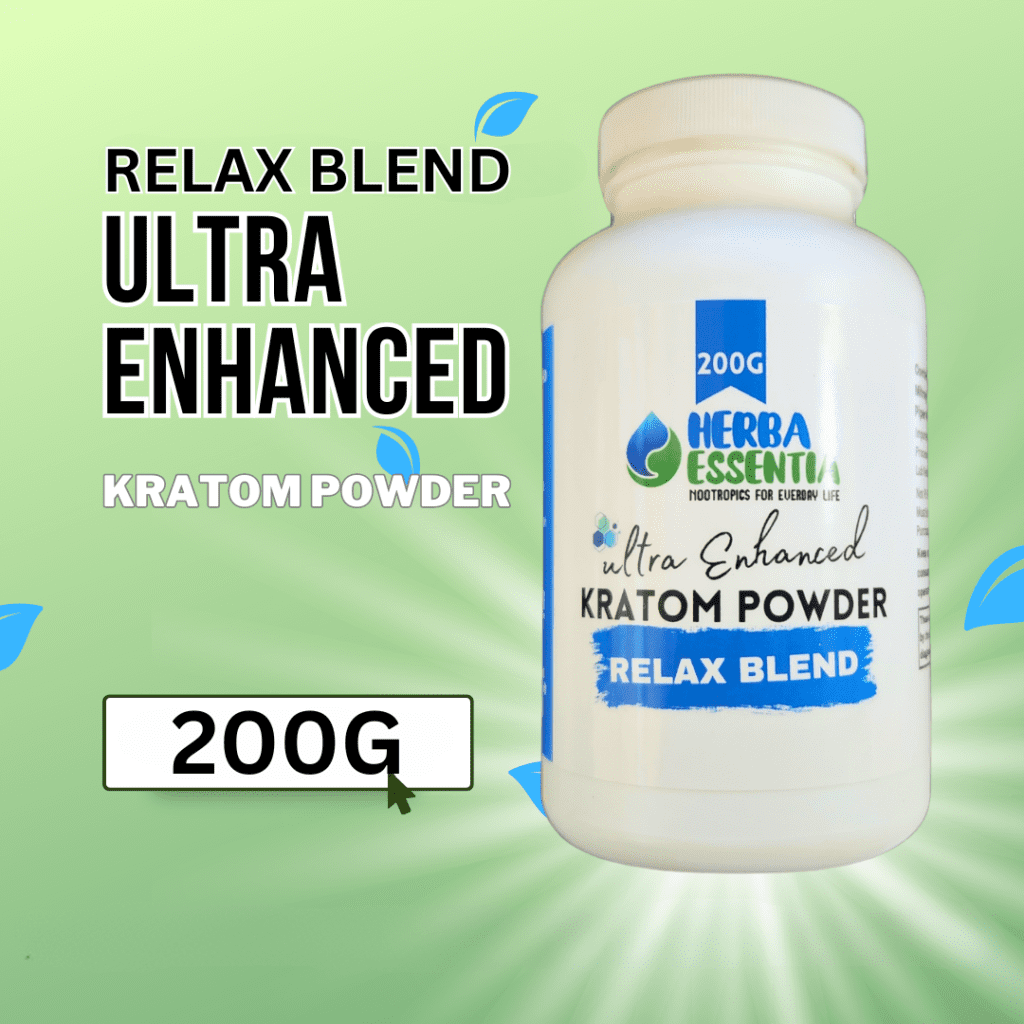
Exploring Popular Strains
Gain insights into the most popular Kratom options, including Red Vein, Green Vein, White Vein, Maeng Da, Bali, and Thai Kratom, and understand their unique characteristics.
| Red | Green | Maeng DA | Bali | Thai | Gold |
|---|---|---|---|---|---|
| Sedative | Energetic | Sedative | Energetic | Energetic | Energetic |
It’s important to note that all kratom is stimulating and the information provided in the table above is anecdotal. Simply put most experience energy with low doses while higher doses tend to be more sedative and this goes for all kratom.
Another point to make is the alkaloid profiles mentioned before are critical components to which effects you will notice.
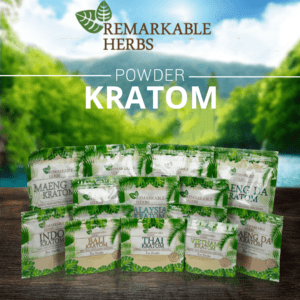
Quality Control and Labeling
Industry Standards
Discover the existing quality control measures and labeling practices within the Kratom industry.
Many manufacturers have been pushing for proper and safe regulation guidelines. Afterall this would legitamize the industry as a whole. Over the last several years some thing called the Kratom Consumer Protection Act has been circulating through every state and it’s governing bodies.
This act proposes safe guidelines for the production, processing, distribution, labeling, dosing and the consuming of all kratom.
Consumer Safety
Safety has been a big concern for law makers overall, it goes without saying that few law makers have invested enough time to understand kratom and how it is helping people. Many of the largest brands in the kratom industry take safety very seriously.
So serious that the industry has self regulated for years, here are some of the safety nets implemented by all the top brands:
| Third Party Lab Testing | cGMP Manufacturing |
|---|---|
| Tests For The Following Contaminants: | Current Global Manufacturing Practices |
| Heavy Metals | Facility Regulated By The FDA |
| Pesticides | Maintains Master Records Of Batches |
| Viruses | High Tiered Clean Rooms For Processing |
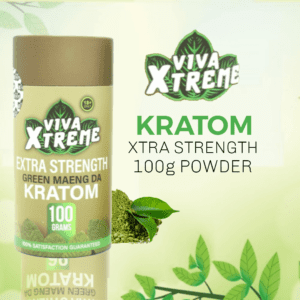
Conclusion
This comprehensive article has delved into the world of Kratom, shedding light on the legitimacy of its names, the science behind them, and the impact on consumers. Armed with this knowledge, you can navigate the intricate landscape of Kratom with confidence, ensuring a safer and more informed experience.
FAQs
What are the different strains?
Characterized by its calming and pain-relieving properties.
Green Vein Kratom
Known for its balanced effects, providing both energy and relaxation.
White Vein Kratom
Typically offers a stimulating and mood-enhancing experience.
Maeng Da Kratom
Renowned for its potency and long-lasting effects.
Bali Kratom
Favored for its relaxing qualities and pain relief.
Thai Kratom
Often associated with stimulating and energizing effects.
How do I choose the right strain?
Are Kratom names standardized?
Are Kratom names just marketing tactics?
How can I ensure the quality of Kratom I purchase?
Research Vendors: Choose reputable vendors with a track record of quality products and transparent labeling.
Read Reviews: Look for customer reviews and feedback on the vendor’s products.
Check for Testing: Inquire whether the vendor tests their Kratom for contaminants and potency.
Start with a Low Dose: Begin with a small dose to gauge your body’s reaction and adjust as needed.
Observe Effects: Pay attention to the effects of the Kratom you consume and adjust strains or dosages accordingly.
By following these guidelines, you can enjoy the benefits of Kratom while minimizing potential risks.
Related Articles:
- Kratom Strains Guide What To Know Now
- Best Kratom Replacement Kanna Top 5 Facts
- Kratom Tea Benefits And How To Guide
- Kratom Extracts Guide What To Know Now
- Kratom Alkaloid 7-Hydroxymitragynine: How It Works
Meet The Author


